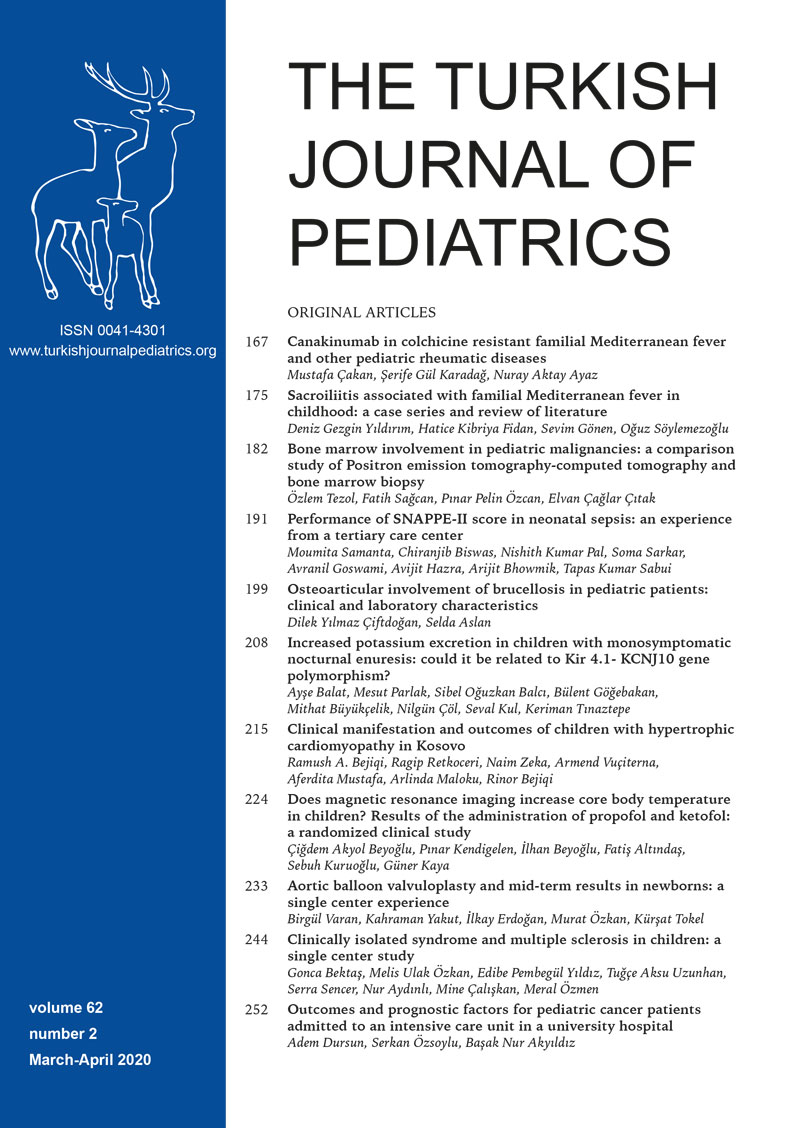Abstract
Background and Objectives. Familial Mediterranean fever (FMF) is an autosomal-recessive auto-inflammatory disorder characterized by recurrent episodes of fever with serositis. Sacroiliitis associated with FMF is very rare, especially in children. We aimed to describe the demographic, clinical, laboratory features, and treatment responses of pediatric patients with FMF -related sacroiliitis.
Methods. The study consisted of seven pediatric patients younger than 16 years, diagnosed with sacroiliitis associated with FMF between 2010 and 2017. Medical records of patients were retrospectively evaluated. Sacroiliitis was diagnosed based on magnetic resonance imaging. We also reviewed previous studies of FMF related sacroiliitis.
Results. Five of the seven patients (male:female ratio of 5:2) had a M694V (homozygous) mutation, one patient had a M694V (heterozygous) mutation, and one patient had a V726A (heterozygous) mutation. All patients were HLA-B27 negative. One of the cases achieved remission with colchicine plus non-steroidal anti-inflammatory drug treatment, and one patient`s symptoms were managed by the addition of sulfasalazine. Four patients responded to etanercept treatment, and one patient`s symptoms were suppressed with canakinumab.
Conclusion. Sacroiliitis can be seen in pediatric FMF patients suffering with inflammatory back pain. This manifestation generally occurs in FMF patients who have M694V mutation. Etanercept could likely show a beneficial effect in patients who are resistant to disease modifying anti-rheumatic drugs and non-steroidal anti-inflammatory drugs. In addition, canakinumab treatment should be considered as a successful alternative therapy in this rare group of patients.
Keywords: childhood, familial Mediterranean fever, sacroiliitis, treatment
Copyright and license
Copyright © 2020 The Author(s). This is an open access article distributed under the Creative Commons Attribution License (CC BY), which permits unrestricted use, distribution, and reproduction in any medium or format, provided the original work is properly cited.














